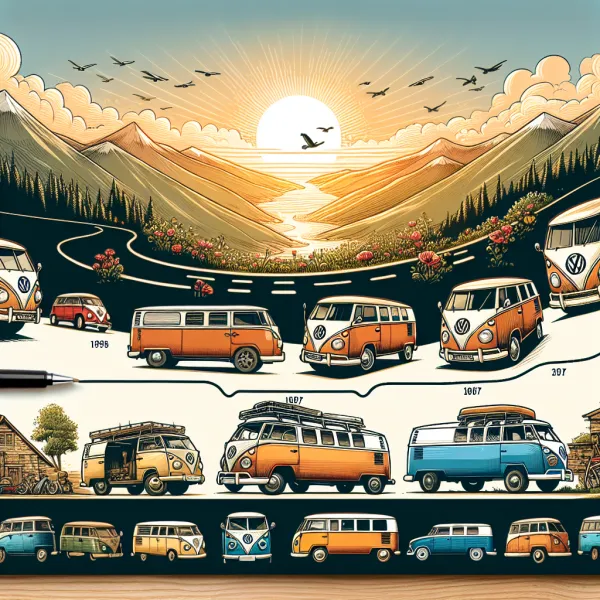The Iconic Volkswagen Type 2: A Timeless Automotive Legend
The Iconic Volkswagen Type 2: A Timeless Automotive Legend
The Volkswagen Type 2, affectionately known as the VW Bus, Kombi, or Microbus, is more than just a vehicle. It is a cultural icon that has captured the hearts of millions worldwide. First introduced in 1950, the Type 2 was Volkswagen's second model after the Beetle (Type 1), and it quickly became a symbol of freedom, adventure, and counterculture movements.
A Brief History of the Volkswagen Type 2
The idea for the Volkswagen Type 2 originated with Dutch importer Ben Pon, who envisioned a practical, multi-purpose vehicle based on the Beetle's platform. Volkswagen embraced the concept, and the first Type 2 rolled off the assembly line in Wolfsburg, Germany, in 1950. Its unique design, featuring a flat front and rear-mounted air-cooled engine, made it instantly recognizable.
The Type 2 was initially offered in two versions: the Transporter (a cargo van) and the Microbus (a passenger van). Over the years, Volkswagen introduced various configurations, including camper vans, ambulances, and even pickup trucks, making it one of the most versatile vehicles of its time.
The Cultural Impact of the VW Bus
During the 1960s and 1970s, the Volkswagen Type 2 became a symbol of the counterculture movement. It was embraced by hippies, artists, and adventurers who valued its affordability, reliability, and spacious interior. The van's association with freedom and exploration made it a popular choice for road trips and cross-country adventures.
The VW Bus was more than a vehicle; it was a lifestyle.
Its iconic status was further cemented by its appearances in movies, music, and art. From Woodstock to surf culture, the VW Bus became a canvas for self-expression, often adorned with colorful paint jobs and peace symbols.
Enduring Legacy and Modern Revival
Despite production ending in Germany in 1979, the Volkswagen Type 2 continued to be manufactured in Brazil until 2013. Its timeless design and cultural significance have ensured its place in automotive history. Today, vintage VW Buses are highly sought after by collectors and enthusiasts, with restored models fetching high prices at auctions.
In recent years, Volkswagen has paid homage to the Type 2 with the introduction of the ID. Buzz, an all-electric van inspired by the original design. The ID. Buzz combines retro aesthetics with modern technology, appealing to a new generation of drivers while honoring the legacy of the Type 2.
Why the Volkswagen Type 2 Remains Relevant
The Volkswagen Type 2's enduring appeal lies in its ability to evoke nostalgia while remaining practical and versatile. Whether used as a camper, a mobile business, or a collector's item, the VW Bus continues to inspire a sense of adventure and creativity.
As we look to the future, the Type 2 serves as a reminder of the power of design, innovation, and cultural connection. It is not just a vehicle; it is a symbol of freedom, individuality, and the joy of the open road.
Conclusion
The Volkswagen Type 2 is more than an automotive icon; it is a cultural phenomenon that has stood the test of time. From its humble beginnings in the 1950s to its modern electric revival, the VW Bus continues to capture the imagination of people around the world. Whether you're a collector, an adventurer, or simply an admirer, the Volkswagen Type 2 is a testament to the enduring power of design and innovation.
